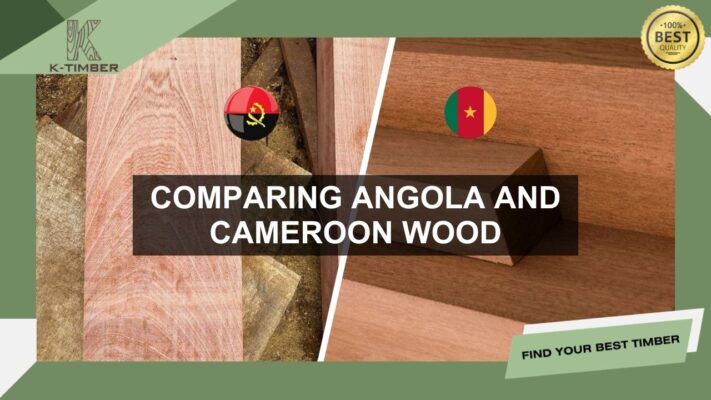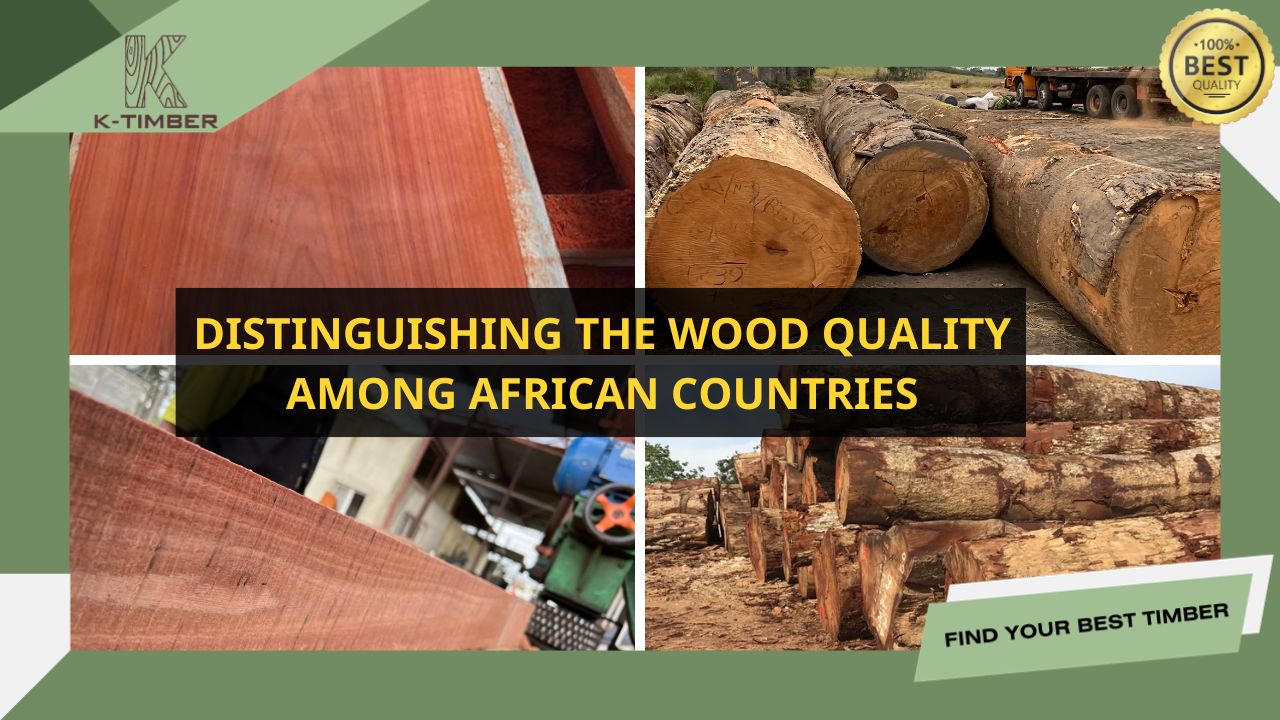As we know, Angola and Cameroon are two countries famous for their high-quality wood supply. Considered the lungs of the world, both Angola and Cameroon boast rich forest ecosystems, with many rare types of wood. However, being located in two different regions means that climate factors also partly influence the quality and color of the wood. This creates a clear difference in the types of wood from Angola and Cameroon. The article below will analyze the differences of the TOP 5 most popular types of wood in Angola and Cameroon.

Table of Contents
Sapele Wood
Sapele wood possesses durability and color characteristics similar to Mahogany but is much more affordably priced, making it extremely popular in many European countries. However, this type of wood also has slight differences in features and properties between the two countries of Angola and Cameroon. Specifically:
|
Criteria |
Angolan Sapele wood | Cameroon Sapele Wood |
| Color |
The wood is dark reddish brown with light brown or black stripes. |
The wood is dark reddish brown and gets darker with age. |
| Wood grain | The grain lines are straight and slightly intertwined. The wood grain is smooth, even and straight. | Wood grain interwoven with ribbon motifs. The wood grain is smooth and straight. |
| Reliability | Has much higher durability and hardness than African mahogany. Highly resistant to dents and impacts. | Similar to mahogany, Sapele Cameroon is also quite durable, resistant to rot and insects. |
| Structure | The heartwood has a wavy, smooth and even texture. | The heartwood has a wavy, smooth and uniform texture. |
| Workability | Easy machining ability, high gloss. | Easy to process, widely used in wood industry production. |
| Application | Producing high-end furniture, especially outdoor furniture, shipbuilding, and flooring. |
Producing high-end furniture, shipbuilding, flooring, veneer, doors, tables and chairs, and musical instruments. |
Iroko Wood
Iroko Wood, also known as African Teak due to its many similarities in features and color. It is widely used in European and Middle Eastern countries, especially in projects requiring high durability and the natural beauty of wood. Below is a detailed comparison of the characteristics and properties of Iroko wood between the two countries of Angola and Cameroon:
| Criteria | Angolan Iroko wood | Cameroon Iroko Wood |
| Color | Iroko sapwood has a color ranging from light yellow to brown and is clearly delineated from the heartwood. Iroko wood gradually darkens over time. | The wood is light yellow to dark brown. The color of the wood is similar to teak and gradually darkens over time. |
| Wood grain | The lines are straight and intertwined. Wavy and curly appearance. | The interlocking wood grain creates a ribbon stripe effect. |
| Reliability | Highly durable and resistant to damage due to strong impacts. | Iroko is a very durable wood that does not require much maintenance. |
| Structure | Wood texture ranges from medium to rough | Wood texture ranges from medium to rough |
| Workability | Machining is easy, with good adhesion and nailing properties. | Easy machinability |
| Application | Used in the production of furniture and outdoor products because of its good termite resistance. | Iroko wood is suitable for many outdoor projects such as shipbuilding, decking, bridges, etc |
Sipo Wood
Sipo Wood, also known as Utile, is a type of hardwood originating from West and Central Africa. Sipo Wood in Angola and Cameroon has many different characteristics and colors such as:
| Criteria | Angolan Sipo wood | Cameroon Sipo Wood |
| Color | Sipo wood has a color ranging from reddish brown to dark brown, tending to gradually darken over time. | Located in a tropical climate, Sipo wood has a medium reddish brown color and clearly defined light yellow sapwood. |
| Wood grain | Sipo wood grain is unique with its combination of straight and twisted grain.. | The wood grain is straight and chained together. |
| Reliability | Thanks to natural essential oils and wood properties, Sipo is resistant to termites and other insects and is highly durable. | Has average durability and basic pest resistance. |
| Structure | The texture of the wood is smooth and even, making surface treatment easier. | The texture is uniform with wood fibers interconnected. |
| Workability | Easy machinability, even with hand and machine tools | Easy to process and finish. |
| Application | Widely used in the production of high-end furniture, cabinets, flooring and panels. | Used in shipbuilding, veneer boards, prisons, and floors. |
Eucalyptus Wood
Eucalyptus is one of the wood types highly valued for its durability and is popular in European and Asian countries. With a much more reasonable price compared to other hardwoods, eucalyptus wood is used for various purposes.
| Criteria | Angolan Eucalyptus wood | Cameroon Eucalyptus Wood |
| Color | In Angola, red eucalyptus wood is common, ranging from reddish brown to dark red. | Cameroon eucalyptus has a dark red color. |
| Wood grain | The grain of eucalyptus wood is straight or has a slight wave shape | Cameroon eucalyptus wood grain is similar to Angola eucalyptus wood with straight or corrugated wood grain. |
| Reliability | Due to its high density, eucalyptus wood has outstanding durability. | Cameroon eucalyptus wood is considered moderately durable. |
| Structure | Eucalyptus wood has a smooth to medium texture | Smooth texture |
| Workability | Ability to process easily, using both hand and machine | Easy machining ability, good ability to hold screws and nails |
| Application | Used in many sunshade structures, beams, flooring or furniture | Application for interior and exterior design. |
READ MORE: Differences between African and European hardwood
From the article above, it is evident that each country has its own unique characteristics regarding quality, types of wood, and practical applications, reflecting the diversity and richness of natural resources. This not only provides consumers with a wide variety of wood products but also highlights the importance of managing and sustainably using forest resources.






![[K-Timber] Blog Post Boder](https://k-timbers.com/wp-content/uploads/2024/06/K-Timber-Blog-Post-Boder-2.jpg)



